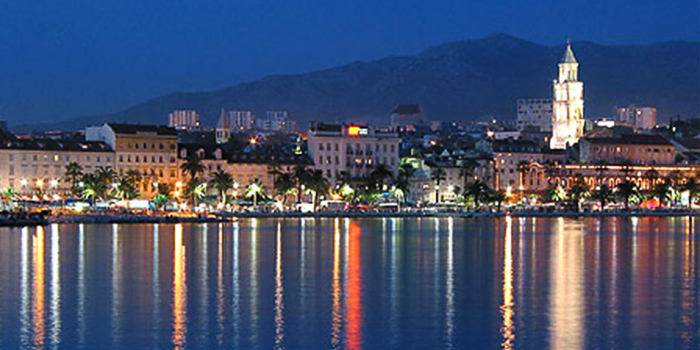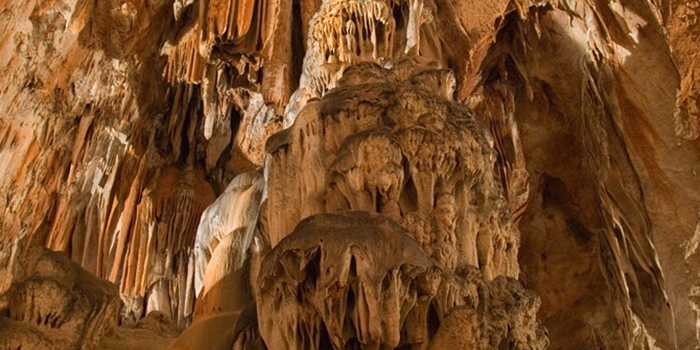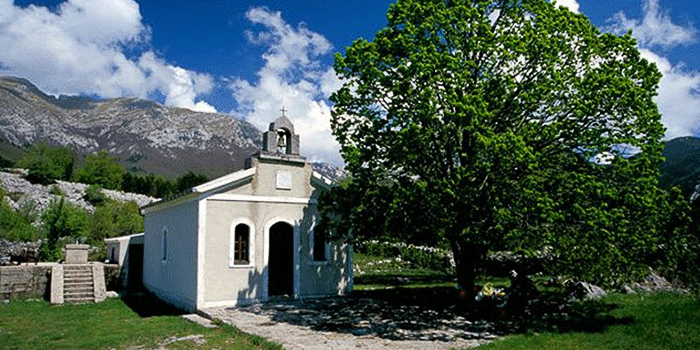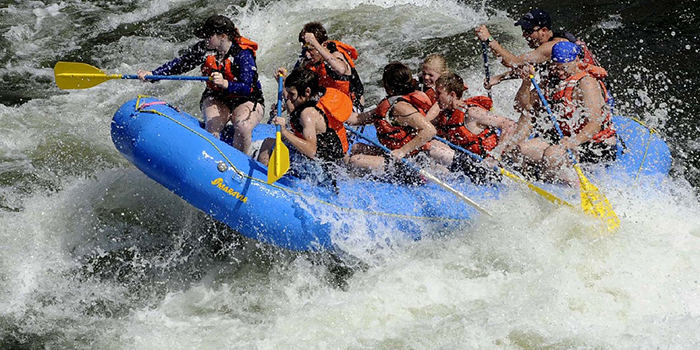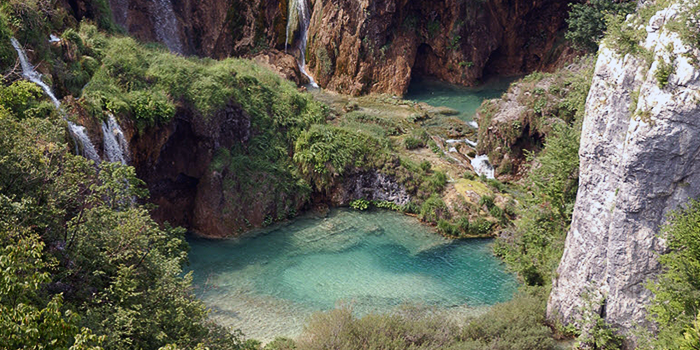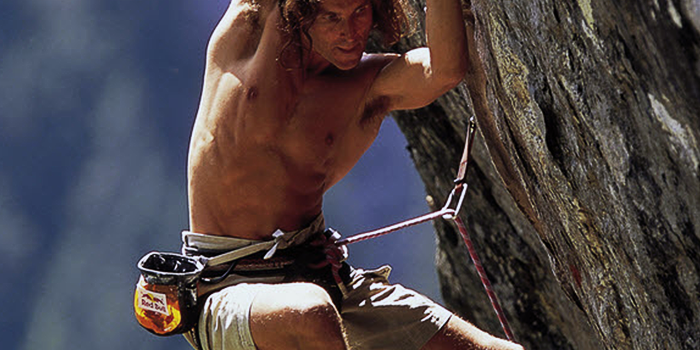National park entrance ticket prices
National park entrance ticket prices
*Click on the picture for National park entrance ticket prices

Nature richly rewarded the Paklenica Riviera, surrounding it with the sea, mountains, rivers, lakes, and islands. Such a variety and richness of the landscape in so small an area can rarely be found. By walking for just a few minutes from the seacoast, you are already in the mountain world of Paklenica and the Velebit Mountain. By boat you can put to sea towards the magical Kornati Islands or the imposing cliffs of the Telaščica Bay. The Zrmanja, Krka, and Una Rivers are karst beauties, whose magnificent canyons, flashing falls, and banks filled with greenery leave visitors breathless. The Plitvice Lakes, adorned with gorgeous waterfalls and dense green forests, are recognized pearls of the world natural heritage, while Vransko Lake is a birdwatcher’s paradise. Their special features have caused this region to be protected and united into as many as 5 national parks and 3 nature parks.
The wealth of experience
There are innumerable possibilities to further enrich your visit to the Paklenica Riviera. The National Parks: Paklenica, Krka, Kornati, and Plitvice Lakes, as well as the Nature Parks Northern Velebit, Vransko Lake, and Telaščica Bay will delight you with the infinite beauty of nature, and the historical urban centers of Zadar, Nin, and Pag with their perfect harmony of ancient and modern. The impressive beauty of the Velebit Mountain can most intensively be experienced on photo-safari excursions. A trip sailing by sea all the way to the rapids on the Zrmanja River is an unforgettable experience… Another 3 sites on the UNESCO World Heritage list are also located in the vicinity – The Plitvice Lakes National Park, the historical nucleus of the city of Trogir, and the Cathedral of St. James in Šibenik….
*Source www.rivijera-paklenica.hr
Paklenica National Park
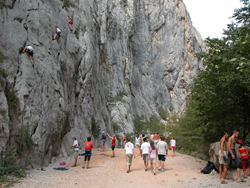
Paklenica National Park is located in Northern Dalmatia near Starigrad Paklenica and Zadar. The said includes two canyons named Mala Paklenica and Velika Paklenica. The Park covers the southern part of the slopes of Velebit and is located between sea and mountain, has an area of 96 square kilometers and its highest peak is Sveto Brdo (1753 m above sea level). The Velika Paklenica Canyon is 14 km long and between 500 and 800 m wide, while the perpendicular rocks rise up to its sides until they reach 700 m. The most attractive part of the canyon is the area around the creek that is reached by walking against the current from Anića Luka: high cliffs rise above the stream and form the narrowest part of the canyon.
The Mala Paklenica Canyon is 12 km long and 400- 500 m wide, and the boundary rocks rise up to 600 m. The pass between VelikaPaklenica and Mala Paklenica is very difficult, formed by karst rocks and spurs.
In the central part of the Park are the mountain resorts of Borovnik and Crni Vrh, along with Mala Močila and Velika Močila: Velika Močila is a valley shaped like a basin and is located 850 m above sea level near the Crni Vrh peak (1100 m above sea level). Skiljina Kosa (1015 m above sea level) and Zeleni Brig (842 m above sea level), while Borovnik, is located in the southern part of the Park. The eastern part of the Park is very different, wild and inaccessible, but advancing towards the east it transforms into an area with milder forms around two karst plains named Malo Libinje and Veliko Libinje, with numerous wells. The highest area of the Paklenica National Park is the narrow summit of Velebit, 1 to 3 km wide, where the highest peak of the Velebit massif is located: Vaganski Vrh 1757 m above sea level. The most typical forms of the National Park are located around Bojinac, Vidakov Kuk and the highlands around the two canyons: there are numerous karst forms formed by the intense action of the water and by the temperature changes during the different seasons.
To see in the Paklenica National Park
The Paklenica National Park is the ideal place for those who enjoy walking and climbing. At the entrance of the Park towards the Velika Paklenica canyon there is an impressive vertical rock that bears several climbing tracks, further ahead the rapids of the Zrmanja river's upper course are ideal for rafting and canoeing, while those who love cycling will surely be attracted by the numerous cycle paths. The karst environment also abounds with numerous caves and quarries: among these three are nearby and can be visited - Manita Peć, Modrić Spilja and Cerovačke Pećine.
Walk:
The Paklenica National Park offers over 150km of marked trails and marked routes, ranging from simple, low-difficulty tourist promenades to the more challenging ones leading to the highest peaks of Mount Velebit (Vaganski Vrh 1,758 m and Sveto Brdo 1,753 m), educational trails (Mirila, Terezijana, Premuzićeva staza / PremuzićTrail).
Mountain climbing:
Paklenica National Park is known among mountaineers all over Europe especially for the vertical walls of the Velika Paklenica canyon, over 400 m high at the entrance to the Park, only 2 km from the coast and it is not unusual for the Paklenica Riviera to be chosen as a holiday destination for climbing lovers with children: it is also not unusual to see a part of the family enjoying the beach while mom or dad try their hand at climbing. Climbing guides are available at the park management.
Rafting and canoeing
In the upper part of the river Zrmanja you can practice rafting and, when the water level drops during the summer months, canoeing and kayaking are available as well.
Caving
The area of Mount Velebit with its karstic structure abounds with caves and quarries and expert guides can be contacted for an exploration of these treasures. We recommend a visit to the Manita peć cave, the Cerovačke caves, near the village of Gradac, both visited by tourists.
Trails and itineraries for walking:
The walk is the only way to get to know Paklenica. The Park area has more than 150km of trails and routes ranging from the more touristic ones that lead through the canyons of Velika and mala Paklenica, up to those designed for mountaineers who lead at the highest peaks of Velebit; Vaganski Vrh (1,757m) and Sveto Brdo (1,753m). Here are some of the most visited trails:
Route Velika Paklenica - Anića Luka-Lugarnica-Paklenica Mountain Refuge
Two-hour walk on a 400m drop in altitude where you can visit the Paklenica mills, the Velika Paklenica Canyon, karst phenomena, streams with waterfalls, climbing areas, the Anića Kuk rock, the Lugarnica forest shelter, the mountain refuge at the foot of the mountain villages of Parići and Ramići.
Route Velika Paklenica-Anića luka – Manita peć, can be covered in an hour and a half on a difference in altitude of 450m, the trail offers a spectacular view of the cliffs of Anića Kuk, Jurasova Glavica and Manita Peć and the Manita Peć cave.
Route Velika Paklenica - Paklenica mill - Paklarić Fortress – the itinerary that can be covered in about an hour on a 120m drop; the route touches the old mill, the belvedere overlooking the sea and the mountains, educational panels with information on the territory, the flora and fauna, karstic phenomena and the Paklarić fortress.
Route Park Entrance –Velika Paklenica - Anića Luka -Grabove doline -NjiveLekine- Mala Paklenica-Seline, difficult path lasting 6 hours with a vertical drop of 650m from the park entrance to reach the Velika Paklenica Canyon, through the woods of black pine and beech, the well of Vodarica, the Kapljarka cave, numerous karst phenomena up to the canyon of Mala Paklenica.
The Paklenica National Park is a real phenomenon; if you decide to visit it, you won't regret it.
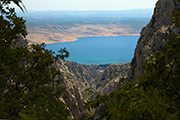
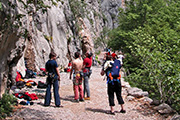
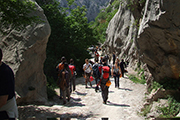
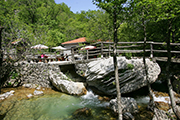
Kornati National Park

Due to the exceptional beauty of the landscape, the intriguing geomorphology, the extreme jaggedness of the coastline and the incredibly rich marine life, the majority of the Kornati waters was declared a national park in 1980.
www.kornati.hr
*Source www.rivijera-paklenica.hr
Vransko Jezero nature park
Vransko jezero is the largest natural lake in Croatia. The predominating characteristic of the park is its special Ornithological reserve, which has been included to the list of Important Bird Areas in Europe and is a potential Ramsar site. It streches in the direction from the North-West to the South-East paralelly to the sea coast, from which it is in some places less than a kilometer apart. It is an unusual compromise and connection of land and water which offers a refuge to diverse species of plants and animals, offering them all that its neccessary for life. The lake is unique for its postition and characteristics not only in Croatia but also in other parts of Europe. It is in fact a karst valley filled with brackish water and is below sea-level…
www.vransko-jezero.hr
*Source www.rivijera-paklenica.hr
Telaščica nature park
Telašćica bay is situated in the in the SE part of the island of Dugi otok. The bay is surrounded by 13 islands and islets, together with 6 islets inside the bay of Telašćica itself, The area of "Telašćica" Nature Park is distinctly contrasted area with quiet and peaceful beaches and laid down coastline on one side and wild and rough cliffs on the other. It is the area of the Aleppo pine-trees and holly oak woods on one side and bare rocky grounds on the other. It is the area of cultivated fields of vineyards and olive-trees, as well as the area of degraded forms of the flora covering dry habitats...
www.pp-telascica.hr
*Source www.rivijera-paklenica.hr
Velebit nature park
When we are talking about the Velebit Mountain, and all the natural resources it has to offer, it would be unfair not to mention the Velebit Nature Park.
The Velebit is, looking from the air, a gigantic stone bastion, the boundary between the land and the sea. A set of karst sinkholes, ridges, crags, valleys, ridges and peaks that attracts with its biodiversity and beauty. Yet many will describe this mountain with words that have nothing to do with biology, geography or caving. And they will say that the mountain called them, and that that was the loudest cry they ever heard, from the tacit stone.
Being on the Velebit means jumping over your own shadow. It is impossible, that is, to "beat" the mountain. It dominates everything that a man can achieve with his physical strength and his ability. Even those who have climbed to the highest peaks of Velebit use to say that they have just begun to know it. For many , precisely Velebit is the place where they meet themselves in the mountains. An experience of true freedom and harmony with nature. The mountain is not just a stone path; it is - the path of the soul.
The Velebit Nature Park is the most important endemic node of land flora and fauna in Croatia. On the Velebit, 1854 species of flora were observed, of which 79 endemic species. Precisely for this reason, the area is often also called the "center of endemism". Their habitats are rocks and basins in the western slope of Velebit, caves and areas along the Krupa and Zrmanja rivers, as well as meadows and mountain pastures. The best known of the endemic species is definitely the Velebitic Degenia (DegeniaVelebitica).
The most represented habitats are wooded ones. Meadows and pastures are particularly important because they "preserve" biodiversity. The mountain forests of Beech (Lamio orvalae - Fagetum) are the most numerous and are found on the majority of the area.
Over 800 meters of altitude we find dinaric forests of beech and fir (Omphalodo Fagetum). At an altitude of over 1000 meters there are Seslerio autumnalis-Fagetum beech trees growing on stony plateaus. From those altitudes to the peaks about 1650, meters you will find submontane woods of beech and mountain maple (Polystycholonchitis-fagetum). These are the areas covered with snow, where strong wind has bent the trees with its weight.
Mount Velebit is the home of the great wild beasts such as the bear (Ursus arctos), the wolf (Canis lupus) and the lynx (Lynx lynx), as well as the otter (Lutralutra).
The Ornithological Institute of the Croatian Academy of Sciences and Arts has proposed the inclusion of this area in the European NATURA 2000 network as even 18 species of birds meet the required criteria. Some of the pointed out ones are; the gardener (Emberizahortulana), the capercaillie (Tetraourogallus), the dwarf owl (Glaucidiumpasserinum), the boreal owl (Aegoliusfunereus) and the White-backed woodpecker (Dendrocopusleucotos).
The Velebit Nature Park also has a separate history, of the underground one. It is very interesting to replace the sunlight with the weak light of the cave and the landscapes above with the underground ones. The Cerovac caves are the largest caves in Croatia. The complex consists of 3 caves, lower, median and upper; while 5.5 kilometers have been explored so far.
In the caves the rule "look, but do not touch" applies. Negligence could cause a priceless and unrecoverable damage to the stalactite that nature has patiently "built" with the constant dripping of water over thousands of years.
It is wonderful to enter the ancient dwelling of the cave bear (Ursus spelaeus). You have entered a kind of archaeological time machine and in an instant you can replace the view of the Velebit peaks and the present moment with the journey through time, of thirty thousand years ago!
The cave bear was a real giant. Erected on its hind legs it reached three meters in height, and often weighed a ton too. He lived in the ice age, when the world "above" the Velebit had a completely different appearance: the peaks were set in the ice, the level of the sea was about a hundred meters lower. Where today there is the sea, then there was the land, the islands were the peaks of the mountains, and cattle and wild horses grazed in the pratose canals of Velebit.
The cave room took its name from the cave bear as well- the Hall of the Bear (in Croatian Medvjeđa dvorana).
The Lower Cave of Cerovac, also called Turkaljeva, is located about fifteen meters below the railway. The length of all the channels explored so far in the Lower Cave is over 4000 m, while the length of the tourist trail is about 700 meters. After about 800 meters the cave is divided into two arms. One extends towards the north-west. In that part there is the main finding of the remains of the cave bear - the Hall of the Bear. The other arm extends to the south-west and represents the primary channel along which the water flowed from the Gračac Field (Gračačko polje) in the period when the cave had an active hydrogeological function of the abyss.
Between the Upper Cave and the Lower Cave is the Median Cave. It has a depth of 92 meters, and the total length of all channels is 390 meters. It is a speleological place with many ramifications.
The Upper Cave is located about thirty meters above the railway. People in the area call it Kesić Cave. 1290 meters have been explored, and the tourist trail is 700 meters long. Also here were found many bones of the cave bear (Ursus spelaeus) and the footprints left by its movement in the darkness of the cave, the so-called "trails of the bear".
The beauty of the rooms inside the caves is surprising. One of them is called the Paleolithic Hunter's Room and in that room, remains of bones and human bone tips of paleoanthropological interest have been discovered as well.
Stalactites, stalagmites, columns, tents, jets, waterfalls and cave pearls are fascinating underground decorations that leave no one indifferent. And when you leave the cave, you will still have the impression of being "inside" for a long time, in the wonderful underground world of the Velebit Nature Park.
The Zavratnica inlet is the marine jewel of the Park. In the list of the most beautiful bays of the Adriatic always occupies one of the first places.
As if a piece of the northern seas coast had gotten "lost" in Croatia - the form of Zavratnica resembles that of a fjord, even though there were never glaciers here. The swollen torrents crisscrossed the slopes of Velebit and one of these streams was simply submerged due to the postglacial elevation of seawater. Thus the Zavrtnica karst was formed.
The inlet is about 800 meters long. At the beginning of the twentieth century, the upper path was built with a viewpoint and a promenade along the sea. Around the same time, Zavratnica became a secret summer residence for the elite of Vienna and Prague.
For many, this inlet was a discovery. Many artists, scientists and Velebit enthusiasts used to come there. Among them also the Croatian writer Vjenceslav Novak who had written numerous pages of Croatian literature right here. The blueness of the sea, the grayness of the stone, the scarce green and the dense shadows of the trees in some parts depict Zavratnica with fascinating and wonderful colors.
Not even this place, due to its inexplicable beauty, has not escaped the legend. And the legend tells that a terrible earthquake occurred and that in one night three ancient Roman cities were submerged: Ortopla, Cissa and Lopsica. Zavratnica was born from the submerged cities.
As you can see, Velebit Nature Park is the place where you can go up to the clouds, and down deep into the wonderful underground, so be sure not to miss it.
Krka National Park
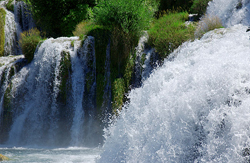
This national park is a vast area of exceptional and numerous natural riches, for the most part untouched. It encompasses one or more preserved or insignificantly altered ecosystems.
With its seven travertine waterfalls, totalling 242m in height, Krka is a phenomenon of nature and karst. At the very heart of the National Park is a Franciscan monastery, situated on the islet of Visovac.
www.npkrka.hr
*Source www.rivijera-paklenica.hr
Plitvice Lakes National Park

The Plitvice Lakes are Croatia’s best-known national park and are considered to be among the most beautiful sights in Europe. Because of their natural diversity, UNESCO has included the lakes on the list of World Heritage Sites.
Plitvice Lakes consist of 16 interconnected lakes with numerous waterfalls and surrounded by dense forest. Visitors will find many walking trails with small wooden bridges across the lakes, just above the still water’s surface.
www.np-plitvicka-jezera.hr
*Source www.rivijera-paklenica.hr
Northern Velebit National Park

The area was declared a national park due to the exceptional variety of karst phenomena, the diversity of wildlife and the exceptional natural beauty of this relatively small area. The park covers an area of 109 km2 and also includes the Hajdučki kukovi and Rožanski kukovi strict nature reserves. These are specific geomorphological phenomena in which over 150 pits have been discovered so far, the best-known of which is Lukina jama (Luke's Pit), one of the deepest in the world, discovered in 1999.
*Source www.rivijera-paklenica.hr
Zadar
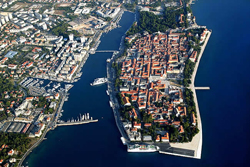
The town of Zadar is the centre of the region and was founded 3000 years ago. It is impressive for its architecture, museums and churches, as well as its rich cultural life and the entertainment it offers.
www.tzzadar.hr
*Source www.rivijera-paklenica.hr
Ljubotić

Ljubotić is one of the rare mountain settlements that is still active and has retained its ancient character. It is situated in a green oasis on the slopes of Mt. Velebit and yet so near to the coast (3km above the town of Tribanj-Kruščica).
It is possible to try simple local specialities, and to visit an ethnic house and a permanent exhibition on the development of beekeeping in Dalmatia and the Mediterranean (in preparation) at the rural homestead of Vrata Velebit (the Gates of Velebit).
Nearby, there is the Mirila educational trail, while experienced hikers will gladly head to more distant but attractive locations, like Stap, Kamena galerija (Stone Gallery) and Reljina Cave.
www.vratavelebita.com
*Source www.rivijera-paklenica.hr
Zrmanja
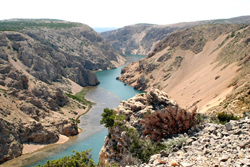
The Zrmanja River delights with its crystal clear waters wending their way through an imposing, 200-metre-deep canyon before merging with the waters of the sea at the town of Novigrad. The upper reaches of the river abound in travertine waterfalls, both large and small, among which the most attractive is the 11-metre-high Veliki buk, while Jankovića buk, bedecked with the striking remains of old mills, is a popular area for excursions. Sailing from Starigrad-Paklenica, Novigrad – an ancient fishing settlement situated at the very mouth of the river – is worth a visit, as are the fortifications of the Kurjaković princes above the town of Obrovac, which is also situated on the banks of the Zrmanja River.
The most interesting tributary of the Zrmanja River is the Krupa. The attractive locations on this stream, like, for example, Deveterac, a large, grass-covered travertine barrier, can be reached by road from Starigrad-Paklenica. The barrier takes its name from the nine travertine cascades that culminate in a 13-metre-high waterfall. Way back in the 19th century, an industrious craftsman constructed the well-known dry-stone Kudin Bridge here, with 12 arches built from travertine blocks placed on the same number of stone columns.
*Source www.rivijera-paklenica.hr
Velebit Jeep Safari
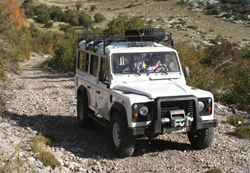
Many of the attractive locations in the Velebit area are accessible only using all-terrain vehicles.
That is how you will visit Tulove grede and the Zrmanja River canyon, drive the historic Velebit roads, and visit the Krupa monastery. We absolutely recommend visiting the spring of the shortest river in Croatia – the Krnjeza. Its source is located at the bottom of a 60 metre deep cave adorned with calcite curtains and stalactites and stalagmites at the entrance, only to converge with the waters of the Zrmanja River a short 600 metres later. Although short, it is as deep as 45 metres in places, and its waters are very cold and clear, excellent for drinking.
*Source www.rivijera-paklenica.hr
One of the many legends about the bora , written in Zoranic " Mountains", the story of a young and beautiful but arrogant girl of noble birth named Bora...
 Which part of Croatia do you find most alluring for a summer holiday?
Which part of Croatia do you find most alluring for a summer holiday?
